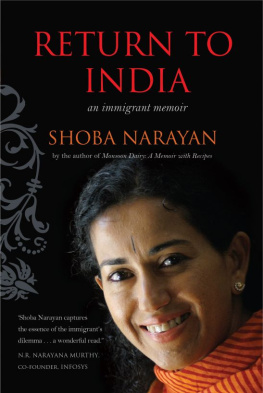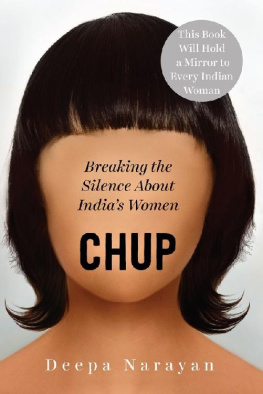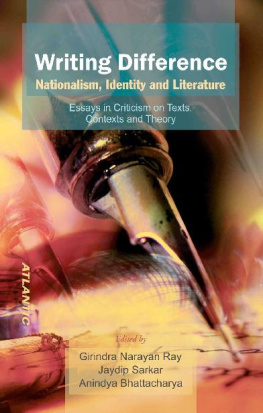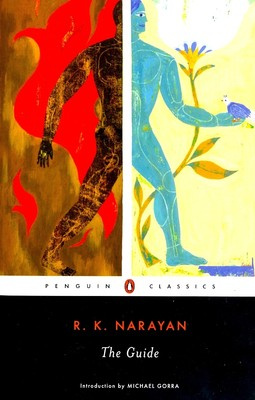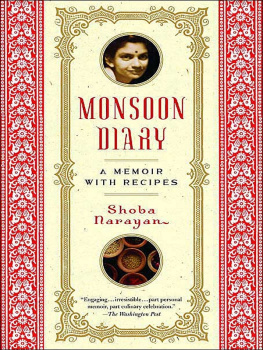~ Timeless Malgudi ~
Published by
Rupa Publications India Pvt. Ltd 2014
7/16, Ansari Road, Daryaganj
New Delhi 110002
Sales centres:
Allahabad Bengaluru Chennai
Hyderabad Jaipur Kathmandu
Kolkata Mumbai
Copyright The Estate of R.K. Narayan 2013
Introduction copyright Sudeshna Shome Ghosh 2013
Foreword copyright David Davidar 2013
Swami and Friends was first published by Hamish Hamilton 1935
Talkative Man was first published by William Heinemann Ltd 1986
An Astrologers Day and A Horse and Two Goats were first published as part of Malgudi Days by William Heinemann Ltd 1985
Under the Banyan Tree was first published as part of Under the Banyan Tree and OtherStories by William Heinemann Ltd 1985
The Guide was first published by Methuen & Co. 1958
The Mispaired Anklet was first published as part of Gods, Demons, and Others by William Heinemann Ltd 1964
My Days was first published by Viking Press 1974
Misguided Guide was first published as part of A Writers Nightmare by Penguin Books India 1988
The Problem of the Indian Writer was first published as part of A Story-tellers World by Penguin Books India 1989
My Dateless Diary: An American Journey was first published by
Indian Thought Publications 1964
eISBN: 9788129125002
First impression 2014
10 9 8 7 6 5 4 3 2 1
The moral right of the author has been asserted.
This edition is for sale in the Indian subcontinent only.
Printed at Replika Press Pvt. Ltd., India
This book is sold subject to the condition that it shall not, by way of trade or otherwise, be lent, resold, hired out, or otherwise circulated, without the publishers prior consent, in any form of binding or cover other than that in which it is published.
Contents
The Genius of R.K. Narayan
In a house in a quiet Mysore neighbourhood, distinctive for the fire of red hibiscus blossoming against its boundary walls, I spent an afternoon, three decades ago, interviewing R.K. Narayan for a long profile I would write about him for a Bombay magazine. I remembered that meeting when I was trying to distil the essence of his genius for this foreword. I suppose the reason I picked that one meeting from our long friendship and association was simpleit was then that I had the clearest personal insight into what underpinned his writing. Like most others familiar with his work I had read a number of theories about what made R.K. Narayan one of the greatest literary writers of our time (or any time for that matter), I was aware of some of his own views on the subject (not that he was particularly forthcoming on his craft), but I was hoping that on this occasion he would finally uncover for me, here in his hometown, that was clearly the place that had inspired his greatest fictional creation, Malgudi, how his fiction was made. I knew the what of his genius, and it was thisit was the particularity of the world he had created. A hundred years from now, you will not mistake Malgudi, that little South Indian town with its railway station, its Mempi Forest, its Sarayu River, its Ellamman Street, its Nallappas Grove, its Lawley Extension, its Krishna Dispensary, its bank, its little bazaar, the temple, Gaffurs taxi, and its myriad other details, for anywhere else. Its colours will not fade, the yellow of the plantains in the shops on Market Road will gleam as brightly as ever and, the jilebis in its sweetshop will never grow stale And these are, of course, the smallest part of its magic. Much more important are the dozens of immortal characters that Narayan created in book after book, the small men (and women) with big dreams whom V.S. Naipaul and John Updike and other great writers have marvelled at, the Margayyas, the Swamis, the Ramans, the Vasus, the Sampaths, the Rajus, the Rosies, the Daisys, who wandered the streets of Malgudi, scheming their schemes, living their lives, falling in and out of love, delighting us with their antics, providing us with all manner of insights into the human condition with the lightest of touches, each of them keeping the world of Malgudi forever alive, fresh and vital, even if the rupee in twenty-first century India is a fraction of its value in Narayans little town and the anna no longer exists. That, in short, was the what of R.K. Narayan. Now all I needed to know was the how. How had he managed to pull it off? What was the secret of his writing? Being the exquisitely courteous man that he was, who would never let a guest or a friend leave empty-handed, he did try to give me something for my efforts, though it may not have been exactly what I was looking for. First, after offering me some superb home-brewed filter coffee, he showed me around the house that hed had constructed to his specifications, especially the many-windowed study on the top floor from which he could look out upon the town which had provided much of the raw material for his stories, novels and reports (Narayan had been a newspaper and magazine reporter this was one among the jobs he had tried out before settling down into his career as a writer of fiction). In the course of that afternoon he told me that he didnt care much for theories about how fiction was made, all that he tried to do was capture in his work the endless possibilities for drama and entertainment that were offered by his fellow human beings in the town and in the countryside every single day, the moment he set foot outside the house. He said he loved watching people, and the endless theatre of human existence was an unending source of material for his stories. He said that though he couldnt or rather preferred not to explain exactly how stories materialized or how novels began, ideas seeped into his mind from the people and situations he had observed in the streets of Mysore from the time he was a young man and thats how it all began. And that, so far as he was concerned, was all there was to be said about the how of his method and craft. Elsewhere, he says much the same thing, in the introduction to one of his story collections: All theories of writing are bogus. Every writer develops his own method or lack of method and a story comes into being for some unknown reason anyhow.
So my advice to you, the reader of his book, is not to waste too much time analysing the writers method or craft but to just enjoy the stories and essays for themselves. Writing doesnt get much better than R.K. Narayan at his best.
New Delhi | David Davidar |
September 2013 |
Introduction
Rasipuram Krishnaswami Iyer Narayan Swami, or R.K. Narayan as every reader of Indian literature knows him as, was born on 10 October 1906. He spent his first fifteen years at his grandmothers house in Madras (now Chennai). His father, a schoolteacher, was posted in several small towns in Karnataka and his mother had her hands full with a number of younger children. In Madras he grew up under his maternal grandmothers benevolent but watchful eye and under the supervision of his uncle. In his autobiography, My Days, Narayan describes a somewhat lonely yet exciting formative years in Madras. His two companions were his pets, a monkey and a peacock, and he would spend a large part of his days looking out at the street with the two by his side. An early photograph, reproduced in his autobiography, shows a serious-faced little boy with large dark eyes looking almost piercingly at the photographer. Narayans description of his childhood days in Madras, with his unusual companions and the sundry comings and goings of people in his grandmothers house, is a thoroughly enjoyable set of recollections which continues to delight readers of all ages.
Next page



